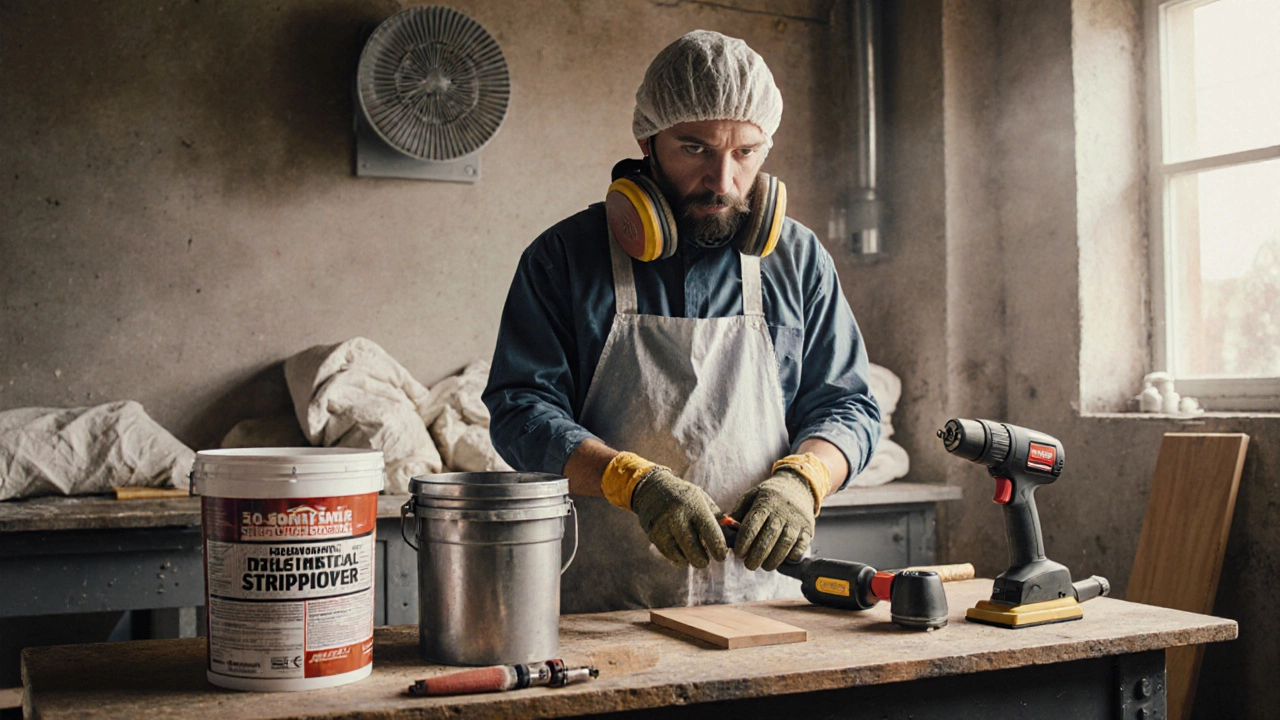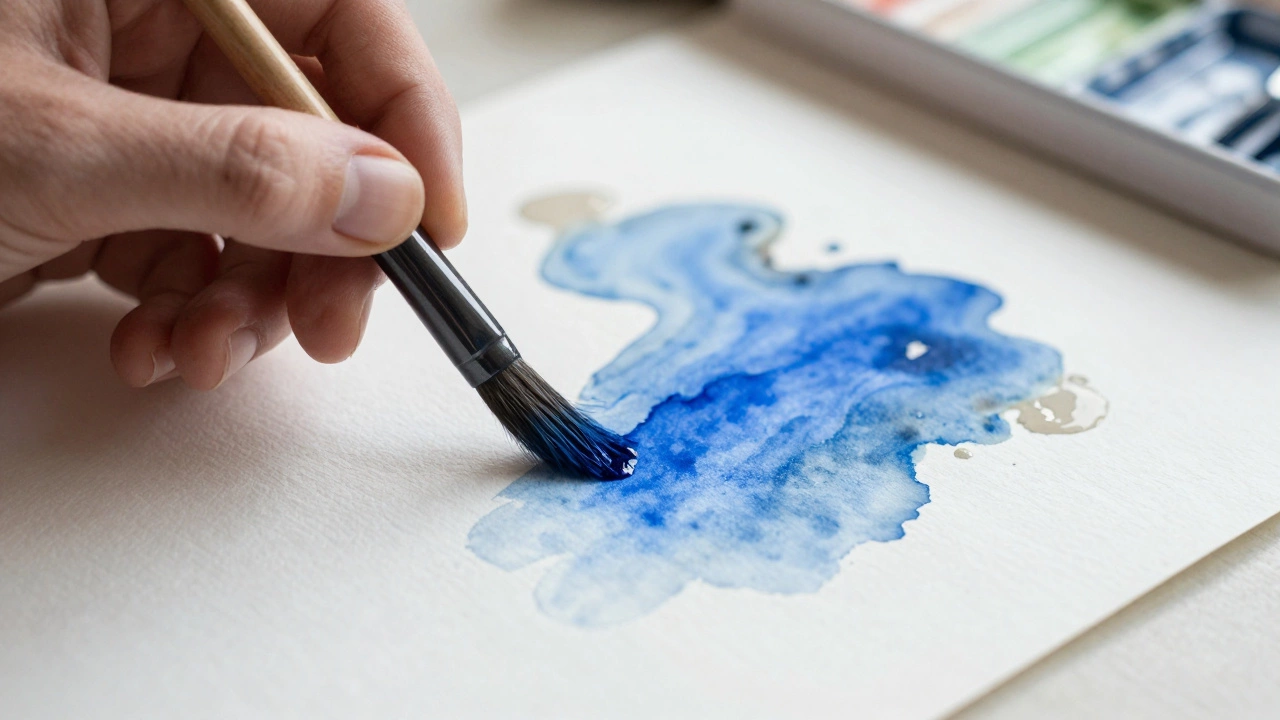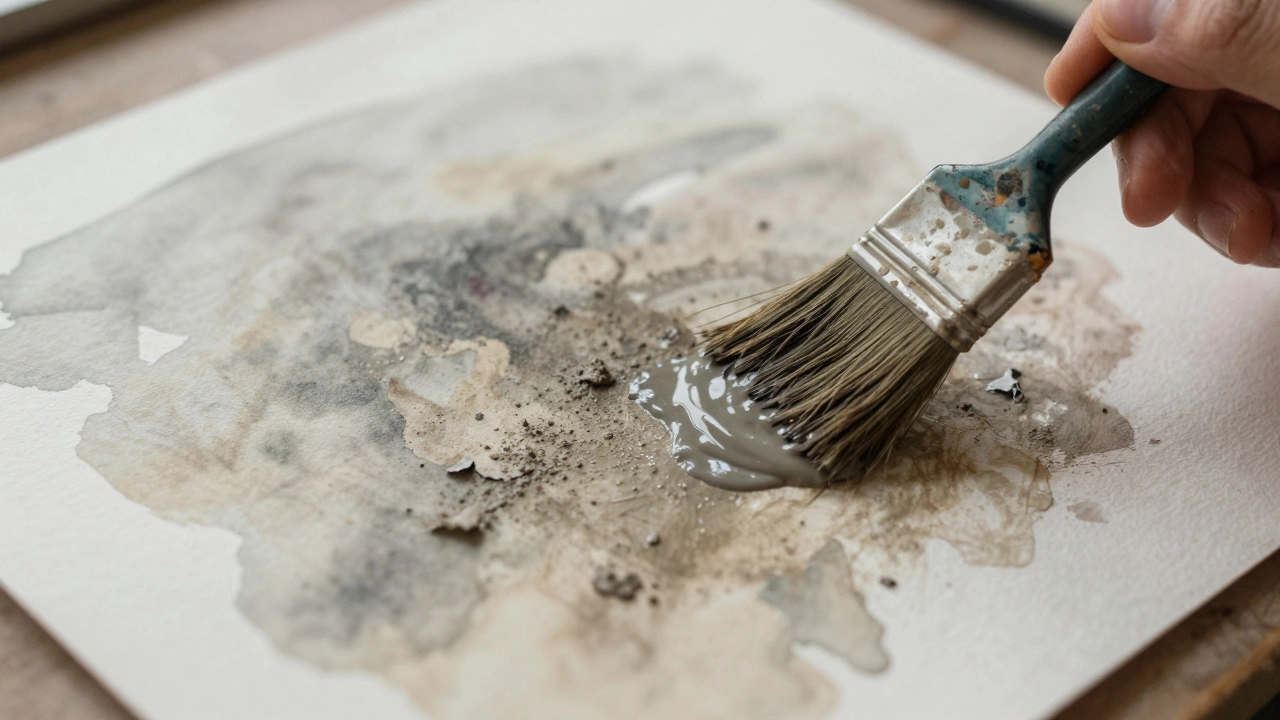Professional Paint Stripping Method Selector
Recommended Method
Safety Considerations
Comparison Table
| Method | Speed (sq ft/hr) | Cost ($/sq ft) | Best Substrate | Safety |
|---|---|---|---|---|
| Chemical stripper | 30–50 | $0.10–$0.25 | Wood, metal, drywall | VOCs, skin contact |
| Heat gun | 20–35 | $0.08–$0.15 | Metal, small interior areas | Burn risk, fire hazard |
| Sanding machine | 40–60 | $0.05–$0.12 | Wood, concrete, masonry | Dust inhalation, hearing loss |
| Abrasive blasting | 80–120 | $0.20–$0.35 | Steel, aluminum | Silica dust, PPE required |
| Infrared remover | 35–55 | $0.12–$0.22 | Wood, metal, composite | Heat exposure, eye protection |
| Steam stripper | 25–40 | $0.07–$0.14 | Drywall, plaster, delicate wood | Scalding, moisture damage |
When it comes to paint stripping, professionals don’t just guess - they pick the right tool for the job, the right chemistry, and the right safety gear. Below you’ll find a step‑by‑step guide that shows exactly what seasoned painters and contractors use to rip old coatings off wood, metal, drywall, and more.
Key Takeaways
- Three main categories of paint stripping: chemical, heat‑based, and abrasive.
- Choose a method based on substrate, paint type, VOC regulations, and time constraints.
- Safety equipment is non‑negotiable - respirators, gloves, eye protection, and proper ventilation save lives.
- Eco‑friendly options (soy‑based or biodegradable strippers) are gaining market share without compromising performance.
- A quick‑check checklist helps you avoid common pitfalls before you start.
Why Professionals Prefer Specialized Strippers
In a commercial job, speed, consistency, and compliance outweigh the low‑cost appeal of a generic household remover. Professionals also need to preserve the underlying material - a woodworking contractor can’t afford to gouge a hardwood floor, and a shipyard painter must protect metal panels from corrosion.
Common Professional Paint‑Removal Methods
Below are the six techniques most often seen on job sites. Each entry includes the first‑time definition with Schema.org microdata so search engines can recognize the entities.
Chemical paint stripper is a formulated liquid or gel that softens polymer coatings through solvents such as methylene chloride, N‑methyl‑pyrrolidone, or soy‑based bio‑solvents. Typical VOC content ranges from 0% (bio‑based) to 65% (traditional). It works best on flat, glossy, or oil‑based paints applied to wood, metal, and drywall.
Heat gun is an electric device that emits focused hot air, adjustable between 100°C and 600°C, to melt paint layers for easy scraping. It’s favored for metal surfaces, automotive panels, and small‑area interior jobs where chemical overspray would be hazardous.
Sanding machine is a powered abrasive tool that removes paint by friction; common grit sizes for paint removal are 80-120 grit for rapid stripping, followed by finer grits for surface prep. Orbital sanders and belt sanders are the workhorses on large wooden decks and concrete blocks.
Abrasive blasting is a process that propels media (glass beads, aluminum oxide, or steel grit) at high velocity to chip away paint and rust. Ideal for metal bridges, ship hulls, and industrial equipment where speed matters more than surface smoothness.
Infrared paint remover is a handheld device that uses infrared radiation to heat and expand paint layers, allowing them to be lifted with a scraper. It offers deeper penetration than a conventional heat gun and reduces the risk of scorching delicate substrates.
Steam stripper is a tool that delivers high‑temperature steam (120°C-150°C) to soften latex and acrylic paints, especially on drywall and plaster where chemicals would cause staining. Steam is also a low‑VOC, fire‑safe alternative for interior renovations.
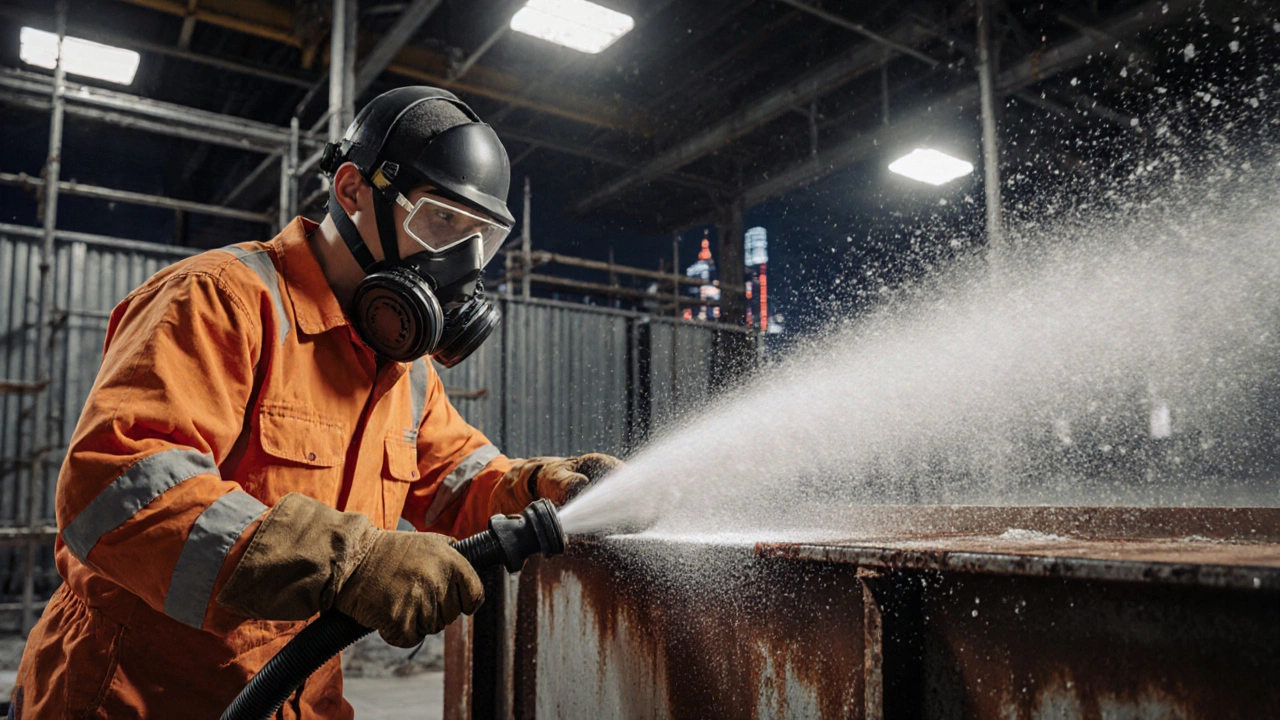
How to Match Method to Job
Choosing the right technique isn’t a one‑size‑fits‑all decision. Use the table below to compare speed, cost, safety, and substrate compatibility.
| Method | Typical Speed (sqft/hr) | Cost per sqft | Best Substrate | Safety Concerns |
|---|---|---|---|---|
| Chemical stripper | 30-50 | $0.10‑$0.25 | Wood, metal, drywall | VOCs, skin contact, proper ventilation |
| Heat gun | 20-35 | $0.08‑$0.15 | Metal, small interior areas | Burn risk, fire hazard |
| Sanding machine | 40-60 | $0.05‑$0.12 | Wood, concrete, masonry | Dust inhalation, hearing loss |
| Abrasive blasting | 80-120 | $0.20‑$0.35 | Steel, aluminum, heavy‑duty metal | Silica dust, PPE required |
| Infrared remover | 35-55 | $0.12‑$0.22 | Wood, metal, composite panels | Heat exposure, eye protection |
| Steam stripper | 25-40 | $0.07‑$0.14 | Drywall, plaster, delicate wood | Scalding, moisture damage |
Safety Gear & Regulatory Considerations
Before you even open the can of stripper, make sure you have the right safety equipment is respirator rated NIOSH N95 or higher, chemical‑resistant gloves, goggles, and disposable coveralls. In Australia, the Work Health and Safety (WHS) Act mandates that any operation producing more than 50g/m³ of volatile organic compounds (VOCs) be performed in a ventilated enclosure or under a local exhaust system.
If you opt for a chemical strip, check the Safety Data Sheet (SDS) for the specific VOC content. Low‑VOC soy‑based strippers (often < 5% VOC) earn the “green” label and are exempt from many state‑level emission fees, while methylene chloride‑based products are heavily restricted in NSW and require a licensed contractor.
Step‑by‑Step Workflow for a Typical Interior Job
- Assess the surface. Identify paint type (oil‑based vs. latex), number of coats, and underlying material.
- Pick the method. For oil‑based paint on drywall, a low‑VOC chemical stripper works best; for latex on plaster, a steam stripper reduces mess.
- Prepare the area. Seal off HVAC, lay drop cloths, and set up an exhaust fan.
- Apply the remover. Follow the manufacturer’s coverage rate (usually 0.5qt per 10sqft). Wait the recommended dwell time (5-15min for fast‑acting gels).
- Scrape safely. Use a plastic putty knife for delicate surfaces; metal tools are okay on metal studs.
- Neutralize and clean. For solvent‑based strippers, wipe the surface with a mineral‑spirit rag; for steam, let the area dry completely.
- Inspect and sand. Lightly sand any residual film with 120‑grit paper before priming.
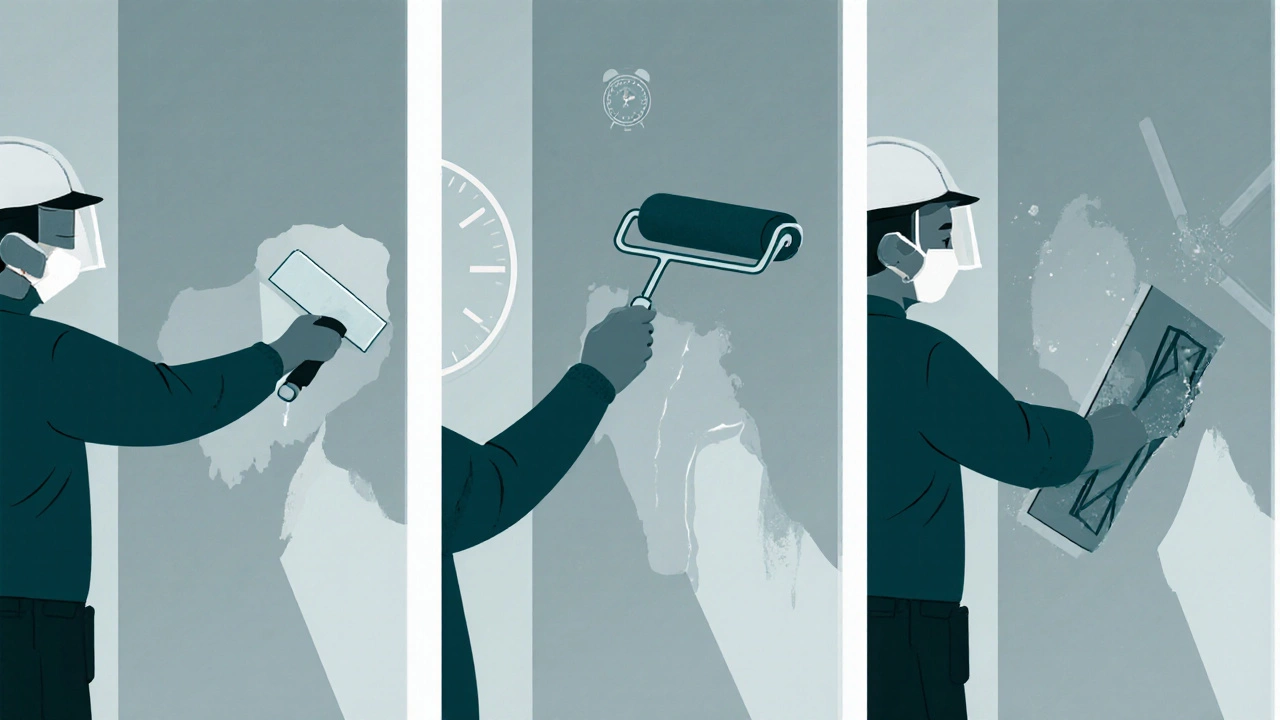
Tips & Common Pitfalls
- Test in a hidden spot. Some strippers react differently on glossy vs. matte finishes.
- Watch temperature. Heat guns above 400°C can scorch wood, leaving a permanent char.
- Don’t over‑apply. Excessive chemical buildup makes cleanup harder and can bleed into seams.
- Mind the moisture. Steam can warp thin plywood; follow with a dehumidifier if the job is large.
- Dispose properly. Solvent‑laden rags are fire hazards; store them in a metal container with a lid.
Quick‑Check Checklist Before You Start
- Surface type identified and measured.
- Method selected and compatible tools on hand.
- All required PPE laid out and inspected.
- Ventilation plan approved (fans, open windows, or respirator).
- SDS for chemicals read and understood.
- Disposal containers ready for waste.
Frequently Asked Questions
Can I use a household paint remover for professional jobs?
Household removers are usually low‑volume, low‑VOC formulas meant for small‑scale DIY. They often lack the potency to cut through multiple oil‑based coats on large surfaces, and they may leave behind a sticky residue that requires extra sanding.
Is a heat gun safe on painted drywall?
Heat can cause drywall plaster to crack if applied too close or too long. Professionals usually keep the gun moving, stay under 300°C, and follow up with a quick‑drying primer to seal any micro‑holes.
What’s the most eco‑friendly chemical stripper?
Soy‑based or citrus‑derived strippers contain less than 5% VOC and are biodegradable. Brands like “Eco Strip” and “Soy Clean” have been tested on wood furniture with excellent results and no hazardous waste fees.
How do I prevent dust when sanding after stripping?
Attach a shop‑vac with a HEPA filter to the sanding machine, wear a NIOSH‑rated respirator, and work in short bursts to let the vacuum clear airborne particles between passes.
Can abrasive blasting be used on historic wooden beams?
Generally no. The high‑impact media will erode the wood fibers. For historic wood, a low‑temperature heat gun or a gentle chemical stripper is preferred to preserve the grain.
Next Steps
Now that you know the arsenal professionals rely on, pick the method that matches your project’s size, material, and timeline. Stock the right safety gear, read the SDS, and run a quick test patch. If you hit a snag, revisit the checklist or the FAQ - most issues are solved by adjusting temperature, ventilation, or the type of remover.
